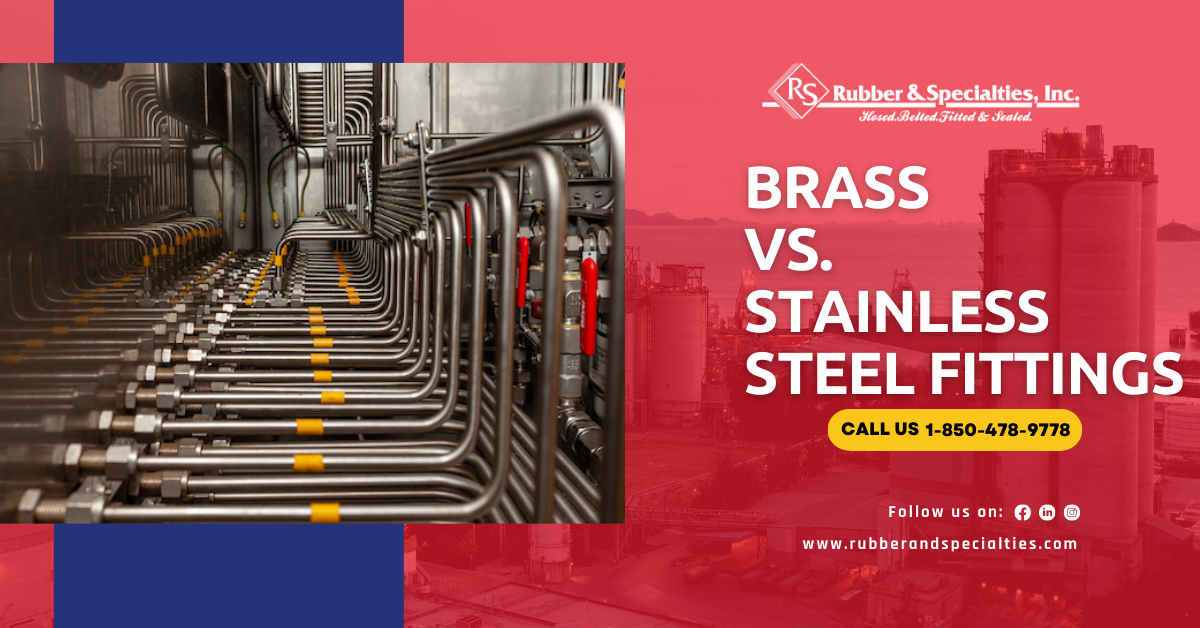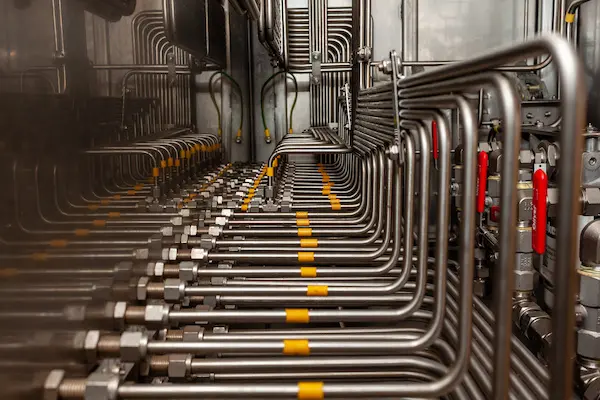
Brass Vs. Stainless Steel Fittings
While brass and stainless steel are commonly used in hydraulic and pneumatic systems, there are benefits to using one over the other. In this blog post, you will learn about the benefits of each, helping you to understand why one may be better than the other for your unique application.
Brass fitting benefits:
- Brass is a malleable metal. It is the best option if you’re shaping or molding to fit a particular space. Despite its great malleability, brass is still very durable.
- Brass fittings are chosen for applications with highly corrosive environments because of their strong corrosion resistance against numerous chemicals, water, slurries and the external atmosphere.
- Brass has high-temperature resistance. As with other materials, brass fittings can resist high heat– however, it has fifteen times the thermal and electrical conductivity of stainless steel. (FYI – Brass fittings up to 400°F, 316 stainless steel 1000°F and carbon steel 500 to 800°F depending on the application)
- Brass is made of rigid material, with a wide range of valuable qualities that deliver top performance for supply lines transporting chemicals and gases. Additionally, it has a moderate pressure rating in fittings of up to 3,000 psi. (FYI – Tensile strength of brass is 338 – 469 MPa (megapascals), 304 stainless steel 515-620 MPa and 316 stainless 515-620 MPa)
- Certain brass valves, weld fittings and flanges have the advantage over stainless steel components: they often receive better welds.
- Brass can have a variety of styles for hydraulic applications.
- Brass is the metal of choice for applications that call for small, precise metal components due to its well-known machinability.
Stainless steel fitting benefits:
- Stainless steel is preferable for applications that need fluid management of petroleum and highly acidic liquids. It is inherently more resistant to chemicals and acids.
- Stainless steel can be significantly superior to brass in more hostile saltwater environments.
- Particularly at high pressures, stainless steel is your best option. (FYI – brass fittings are typically rated for 3,000 psi, stainless steel 10,000 psi (some up to 20k psi))
- Stainless steel requires little maintenance and does not need an additional coating. A stainless-steel system’s anticipated lifetime is greater than 50 years, reducing system downtime, replacement expenses and maintenance expenditures throughout the installation.

Overall, brass fittings are slightly less expensive than stainless steel fittings. In low-budget scenarios, brass is the better choice where the application requires good corrosion resistance but allows for lower pressure. Brass provides reasonable strength and toughness, good corrosion resistance and ductility, (as well as a significant thermal expansion coefficient) at temperatures up to 400°F.
Brass is a considerably better material for welding than stainless steel because of its chemical composition. Removing the oxide layer from stainless steel is typically required for welding. However, though stainless steel is superior in saltwater environments (offshore oil rigs, ship building, etc.), brass is the better option in most other applications.
In conclusion, both brass and stainless-steel fittings have many benefits. However, brass is the superior) choice over stainless steel in specific applications. It can be used for many things, including brass hydraulic hose fittings, compact brass fittings, compression brass fittings, custom brass fittings and more. Like stainless steel, brass fittings ensure that liquids or gases within your tubes and hoses (are) is properly regulated. Additionally, brass is malleable, durable, (versatile, corrosion resistant and) can withstand moderately high temperatures.
SOURCE: https://blog.brennaninc.com/brass-vs-stainless-steel-fittings

